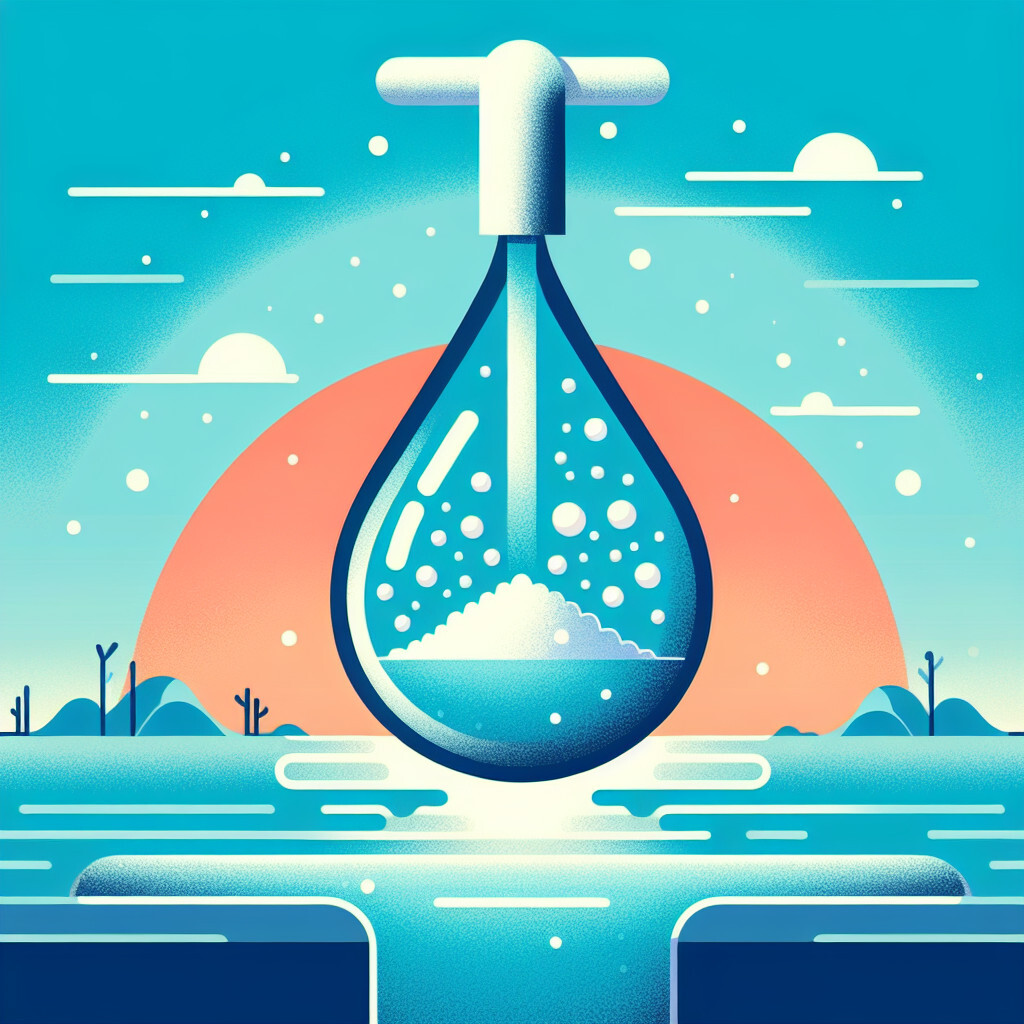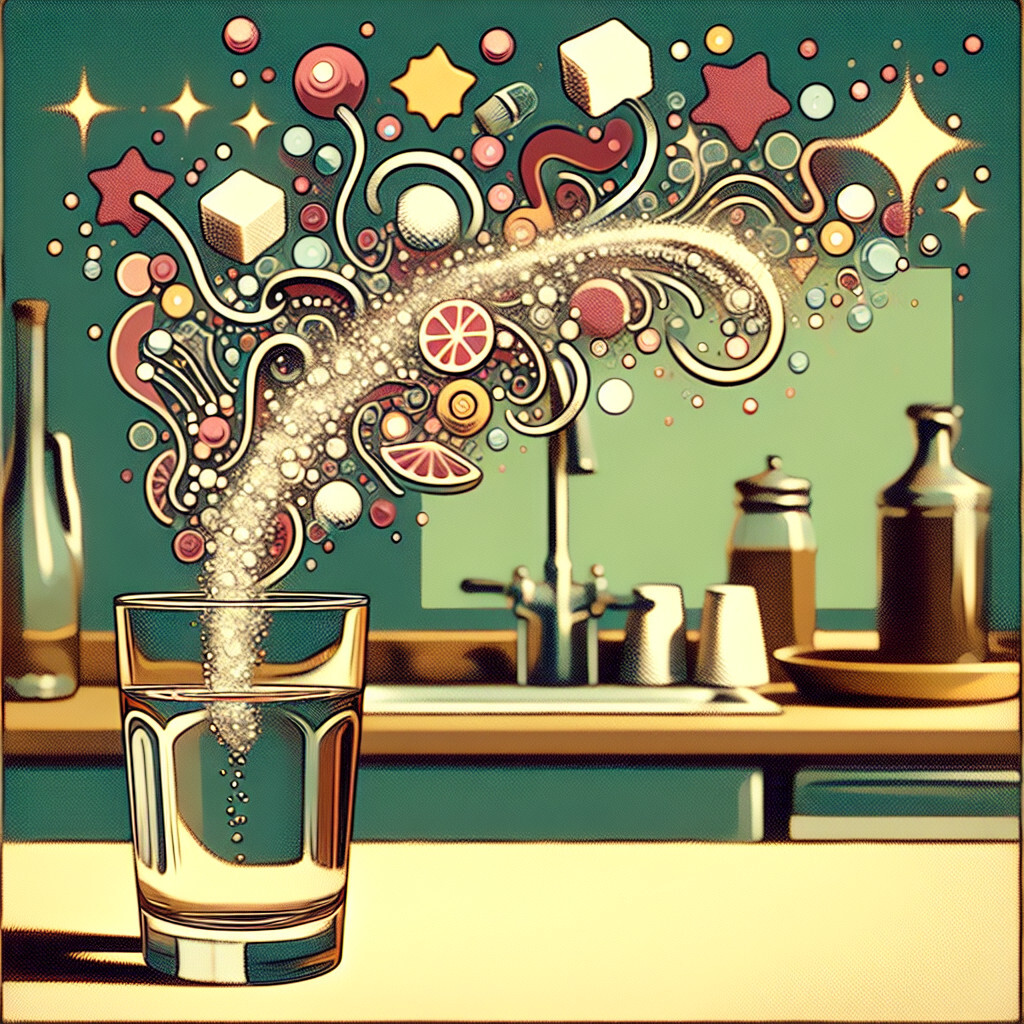-
Table of Contents
“Tap Water: Mostly Safe, Universally Essential.”
Introduction

Tap water safety refers to the assurance that the water flowing from our taps is suitable for daily consumption without posing any health risks. In many developed countries, tap water undergoes rigorous treatment and regular testing to ensure it meets high safety standards. However, the safety of tap water can vary significantly in different regions and countries, depending on the quality of the water source, the effectiveness of local water treatment facilities, and the condition of the delivery infrastructure. Therefore, while most tap water is safe to drink, it’s essential to consider these factors.
Understanding the Safety Measures in Tap Water Consumption
The safety of tap water is a topic of great concern for many individuals worldwide. It is a fundamental necessity for life, and its quality directly impacts our health. Therefore, understanding the safety measures in tap water consumption is crucial.
In most developed countries, tap water is generally safe to drink due to stringent regulations and advanced water treatment processes. These countries have established water quality standards that must be met by public water systems. The water undergoes rigorous testing for various contaminants, including bacteria, viruses, and chemicals. If the water fails to meet these standards, it is treated until it is safe for consumption.
The treatment process typically involves several stages. Initially, the water is filtered to remove large particles. Then, it is treated with chemicals to kill any bacteria or viruses. The water may also be treated to remove harmful chemicals or heavy metals. After treatment, the water is tested again to ensure it meets the required standards.
However, despite these measures, there can still be instances where tap water may not be safe to drink. For example, in areas with old infrastructure, lead pipes can contaminate the water. Similarly, in regions with high levels of industrial activity or agriculture, the water may be contaminated with harmful chemicals or pesticides. In such cases, additional treatment may be necessary, or residents may need to use bottled water or water filters.
Moreover, the safety of tap water can also be compromised by natural disasters or emergencies. For instance, floods can contaminate water supplies with bacteria or other pollutants. In these situations, local authorities usually issue boil water advisories until the water is safe to drink again.
It’s also important to note that the taste or smell of tap water does not necessarily indicate its safety. Some harmless minerals can give water a distinct taste or smell, while some harmful contaminants are tasteless and odorless. Therefore, if you have concerns about your tap water’s safety, it’s best to have it tested by a professional.
In conclusion, while most tap water in developed countries is safe to drink due to rigorous regulations and treatment processes, there can still be instances where it may not be safe. Therefore, it’s essential to stay informed about your local water quality and to take appropriate measures if necessary.
Remember, the safety of tap water is not just a matter of personal health, but also a matter of public health. Ensuring that everyone has access to safe, clean drinking water is a fundamental responsibility of our society. So, let’s all do our part in understanding the safety measures in tap water consumption and advocating for clean, safe water for all.
The Truth about Drinking Tap Water: Is it Really Safe?
The truth about drinking tap water and its safety is a topic that has been the subject of much debate and discussion. Many people are under the impression that tap water is unsafe to drink, while others believe it to be perfectly fine. The reality, however, is not as black and white as it may seem. The safety of tap water can vary greatly depending on a number of factors, including the location and the quality of the water source, the treatment process it undergoes, and the condition of the plumbing system it travels through.
In many developed countries, tap water is generally safe to drink. This is because these countries have stringent water quality standards and regulations in place, which water providers are required to adhere to. The water is sourced from clean and reliable sources, treated to remove any harmful contaminants, and regularly tested to ensure it meets the required safety standards. For instance, in the United States, the Environmental Protection Agency (EPA) sets and enforces standards for tap water quality, requiring water providers to test their water regularly and report the results to the public.
However, it’s important to note that even in these countries, there can be exceptions. For example, in some rural areas or older cities, the water infrastructure may be outdated or poorly maintained, leading to potential contamination issues. Additionally, certain contaminants, such as lead, can enter the water after it leaves the treatment plant, through corroded pipes in the home or building. Therefore, it’s always a good idea to have your tap water tested if you have any concerns about its safety.
In developing countries, on the other hand, tap water is often not safe to drink. This is due to a lack of adequate sanitation and water treatment facilities, as well as poor infrastructure. In these areas, tap water can be contaminated with harmful bacteria, viruses, parasites, and chemicals, which can cause serious health problems if consumed. Therefore, it’s generally recommended to drink bottled or boiled water in these regions.
Furthermore, it’s worth mentioning that the taste of tap water can also vary greatly, depending on the source and treatment process. Some people may find the taste of chlorine or other chemicals used in the treatment process off-putting, even though these substances are generally safe in the amounts used. If this is the case, using a water filter can help to improve the taste.
In conclusion, the safety of tap water is not a one-size-fits-all answer. It largely depends on where you live and the quality of your local water supply and infrastructure. In many developed countries, tap water is generally safe to drink, but there can be exceptions. In developing countries, tap water is often not safe to drink. Therefore, it’s always a good idea to be informed about the quality of your local water supply and to have your tap water tested if you have any concerns. After all, water is a vital resource for our health and wellbeing, and it’s important to ensure that the water we drink is safe and clean.
Exploring the Health Implications of Drinking Tap Water
The question of whether most tap water is safe to drink is one that has been asked by many, and the answer is not as straightforward as one might think. The safety of tap water can vary greatly depending on a number of factors, including the source of the water, the treatment process it undergoes, and the condition of the pipes it travels through to reach your tap.
In many developed countries, tap water is generally considered safe to drink due to stringent regulations and regular testing. For instance, in the United States, the Environmental Protection Agency (EPA) sets and enforces standards for drinking water quality, requiring water suppliers to test for a variety of contaminants on a regular basis. These include bacteria, viruses, and chemicals that could potentially pose a risk to human health.
However, even in countries with strict water quality standards, there can be instances where tap water becomes unsafe. This can occur due to a failure in the treatment process, contamination of the water source, or issues with the distribution system. For example, the crisis in Flint, Michigan, where residents were exposed to high levels of lead in their drinking water, highlighted the potential risks associated with aging infrastructure.
Furthermore, it’s important to note that while tap water may meet regulatory standards, this does not necessarily mean it is free from all contaminants. Many water suppliers use chlorine or chloramine to disinfect the water, which can react with organic matter to form disinfection byproducts. Some of these byproducts have been linked to health issues such as cancer and reproductive problems.
In addition, there are some contaminants that are not currently regulated or tested for. These include pharmaceuticals, personal care products, and certain types of industrial chemicals, which can make their way into water sources and potentially pose a risk to human health.
The presence of these unregulated contaminants in tap water has led some people to turn to bottled water or home filtration systems. However, it’s worth noting that bottled water is not necessarily safer than tap water, as it is subject to less stringent testing and regulation. Moreover, while home filtration systems can remove certain contaminants, they are not capable of removing all types of contaminants and can sometimes even introduce new ones if not properly maintained.
In conclusion, while most tap water in developed countries is generally safe to drink, there can be exceptions. Therefore, it’s important for individuals to stay informed about the quality of their local tap water and to consider additional measures such as home filtration if necessary. It’s also crucial for governments and water suppliers to continue investing in infrastructure and treatment processes to ensure the safety of tap water, and for regulatory bodies to keep up with emerging contaminants and revise standards as needed.
Ultimately, the safety of tap water is a complex issue that requires ongoing attention and effort from multiple stakeholders. By staying informed and taking appropriate action, individuals can help ensure that their tap water is not just safe to drink, but also contributes to their overall health and well-being.
The Role of Water Treatment Facilities in Ensuring Tap Water Safety
Water is an essential element of life, and its quality directly impacts our health and wellbeing. In many parts of the world, tap water is the primary source of drinking water. However, the question of its safety often arises, leading to a widespread debate. The role of water treatment facilities in ensuring the safety of tap water is paramount and deserves a closer look.
Water treatment facilities play a crucial role in maintaining the safety and quality of tap water. These facilities are designed to remove contaminants and harmful substances from the water before it reaches our taps. The process involves several stages, including coagulation, sedimentation, filtration, and disinfection. Each stage is designed to remove or neutralize different types of contaminants, ensuring that the water is safe for consumption.
Coagulation is the first step in the water treatment process. It involves adding chemicals to the water that bind with the dirt and other particles, forming larger particles called floc. The floc then settles to the bottom of the water supply during the sedimentation process. Following sedimentation, the water undergoes filtration, where it passes through layers of sand, gravel, and charcoal to remove even smaller particles.
The final stage in the water treatment process is disinfection. During this stage, chemicals such as chlorine or chloramine are added to kill any remaining bacteria, viruses, or other microorganisms. This process is crucial in preventing waterborne diseases, which can be harmful or even fatal.
However, it’s important to note that while water treatment facilities strive to ensure the safety of tap water, they are not always 100% effective. Some contaminants may still find their way into the water supply. For instance, lead can enter tap water through corroded plumbing systems, and certain harmful bacteria can resist standard disinfection methods. Moreover, the quality of tap water can also be affected by the cleanliness of the pipes in your home and the distance from the water treatment facility.
To ensure the safety of tap water, regular testing is conducted by water treatment facilities. These tests check for a variety of contaminants, including bacteria, viruses, chemicals, and heavy metals. If the levels of these contaminants exceed the standards set by health and environmental agencies, the water is treated again until it is safe for consumption.
In addition to the efforts of water treatment facilities, individuals can also take steps to ensure the safety of their tap water. This can include installing a home water filter, regularly cleaning and maintaining home plumbing systems, and seeking information about the local water supply’s quality.
In conclusion, while most tap water is safe to drink thanks to the rigorous processes undertaken by water treatment facilities, it’s not entirely devoid of risks. The safety of tap water can be influenced by a variety of factors, including the quality of the original water source, the effectiveness of the treatment process, and the condition of the plumbing systems. Therefore, it’s essential to stay informed about your local water quality and take necessary precautions when needed.
Q&A
Question 1: Is tap water generally safe to drink?
Answer 1: Yes, in most developed countries, tap water is generally safe to drink as it undergoes rigorous testing and treatment to ensure it meets safety standards.
Question 2: Can tap water contain harmful substances?
Answer 2: Yes, despite rigorous testing, tap water can sometimes contain harmful substances like lead, especially in areas with older plumbing systems.
Question 3: Is bottled water safer than tap water?
Answer 3: Not necessarily. While bottled water is often sourced from springs or other purportedly pure sources, it is not subject to the same rigorous testing as tap water.
Question 4: How can I ensure my tap water is safe to drink?
Answer 4: You can ensure your tap water is safe to drink by having it tested by a certified laboratory, especially if you live in an area with older plumbing systems.
Conclusion
In conclusion, most tap water in developed countries is generally safe to drink as it undergoes rigorous treatment and regular testing to ensure it meets safety standards. However, the safety can vary depending on the location and the quality of the local water infrastructure. It’s always advisable to check with local health departments or water providers for specific information.






